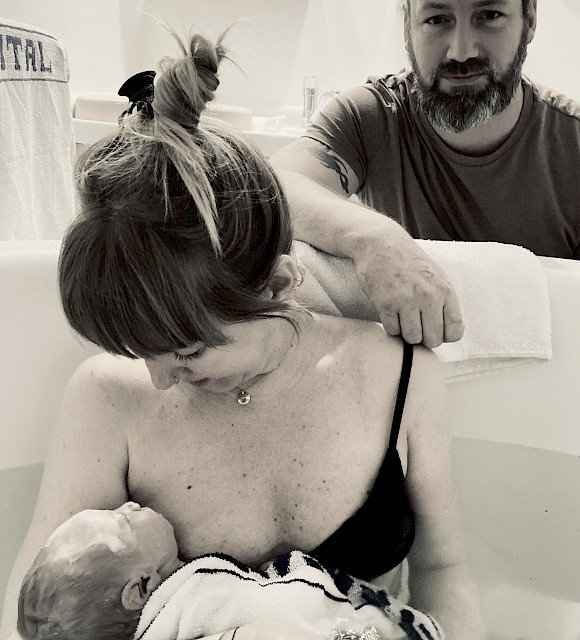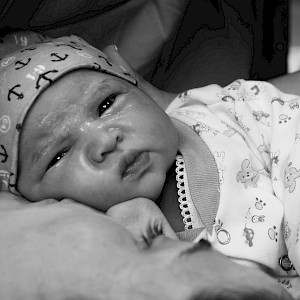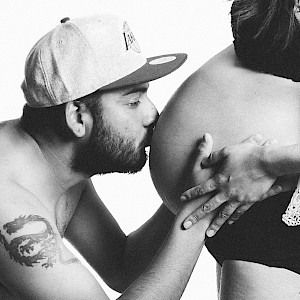What exactly is a water birth?
During a water birth the birth of your baby happens while you are in a pool, filled with warm water. Most hospitals provide pools as well as birthing centers or midwife-led units as water births are supported by NHS. Even when you are considering a home water birth you can get your own pool (rent or buy). Being in deep warm water during labour makes it often easier to move in comfortable positions while being relaxed. The water helps to support your weight and can make you feel more in control.
When to enter the birthing pool?
That’s a tricky one. Being in warm water can help you feel at ease at any stage of labour. It can help to progress labour and fasting the process of birth. If you enter the birthing pool during the opening phase of labour (1st stage) then you might want to exit the pool when you transition to the birthing stage (2nd stage), depending on how long you have been in water already. Some women experience a change of pace in labour when changing environments – leaving the warm water and getting into the cooler air bearing down on the floor or bed afterwards, for example.
If you aim to give birth in water in the birthing pool though, you might want to wait until your transition has started before you get into the water. The comfort of the warm water can help you then during this final stage, can make you feel lighter and at ease while pushing and breathing through your body downwards to your baby.
Can everyone have a water birth?
Water births are not recommended if your baby is breech for example or if you are having twins or triplets, your baby is pre-term or if you or baby have any conditions, infections, bleeding or need continuous monitoring during labour. While being in water, you cannot have any kind of pain relief besides gas and air. If there are any risk factors for you or baby, you might want to speak to your healthcare provider to make an informed decision.
Benefits of water births
Besides the relaxing factor, you will also feel the support of the water. You can try different positions more freely and probably feel less exposed and lighter to move. All that can help to speed up labour. Being in water can improve back or pelvic pains, lower your blood pressure and can make you feel cozy and safe. Furthermore, the warm water can soften and stretch your perineum gradually, which can reduce the risk of tearing or an injury – to name only a few benefits of water births.
Can babies drown during a water birth?
Not really. A healthy baby will only begin to breathe when baby feels cool air on its face. If your bottom and hips are completely under water, you will prevent baby from breathing under water. Water mimics the environment of the womb and is generally safe. It will not affect baby’s ability to breathe as it will continue to get oxygen from the umbilical cord until baby is completely born and lifted to the surface. The air and temperature change will then trigger baby’s first breath. If you are unsure or worried in any case, I advise you to speak to a medical professional. Although many women have been birthing in water for many years, it is still advised to have your midwife or health care provider with you during a water birth. It is safer and easier to keep an eye on things, to make sure the temperature is right for you and baby and help you in case you need assistance of any kind. A home water birth is technically as safe as a water birth in a hospital or birthing center if you check your own circumstances with a healthcare professional beforehand. I would also always advise the presence of a midwife and birthing partner when having a home (water) birth.
Final words
From personal experience I can only recommend considering giving birth in water, as it feels protected, warm and cozy, but also helps you to give baby as much space in the pelvis as needed. Being in an upright position in the birthing pool you can easily breathe through your surges, take in gas and air if you wish. Your surges feel like they are one with the flow of the water, your body feels light floating and also your baby goes from one warm water to another warm water during a water birth before being lifted out into the cool air for the first time. Unfortunately, there is lots of criticism around water births, especially written in US articles. I can only invite you to do your very own research, to speak to your midwife or doctor about risks and benefits of water births and to make the decision that is best for you. It is your baby and your (water) birth.
PLEASE NOTE: A water birth does not guarantee you a pain free birth. Birth is a very personal and unique experience and can take different and unexpected turns any time. Please always talk to your midwife or doctor for medical advice!











